Salsa Sal Pa’Fuera













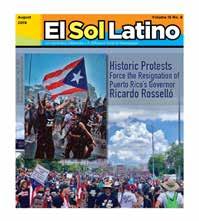
MASSACHUSETTS, MA | SPRINGFIELD SYMPHONY ORCHESTRA | July 12, 2024 - The Springfield Symphony Orchestra (SSO) has announced that local businessman and community activist Cesar Ruiz and Bernard (“Bernie”) Spirito, who recently retired as the Springfield Museums’ Chief Financial Officer, have joined the organization’s Board of Directors.
The addition of Ruiz and Spirito to the SSO Board brings the number of members to 15. Since 2022, the SSO has added seven other new members: Margaret Mantoni, Robert Bolduc, Andrew Cade, Graham Cahill, Sandra Doran, Eileen McCaffery, and Evan Plotkin.

As President and CEO of Golden Years Homecare, Ruiz leads an organization that provides quality and compassionate home care services to those who need assistance performing their day-to-day tasks due to disability, injury, or aging. Ruiz is a prominent figure in the Hispanic community as a businessman, community activist, and entrepreneur, and he was recognized by the Massachusetts State Senate for being the first Latino ever elected at large continued on page 4

Growing According to the latest U.S. Census estimates, the Latino population accounts for around 70% of the nation’s population growth. The Latino population is now 19% of the overall U.S. population, making it the country’s second-largest group after the non-Hispanic White population.
2 Foto del Mes /Photo of the Month
Remembering our August 2019 Edition
Portada / Front Page
Cesar Ruiz and Bernard Spirito Join the Board of Springfield Symphony Orchestra
3 Salsa Sal Pa’Fuera Conmemora su 7mo Aniversario
4 Center for Puerto Rican Studies Receives
$6.4 Million from The Andrew W. Mellon Foundation
5 Julio Frenk will be the Next Chancellor of UCLA
6 Opinión / Opinion
Springfield’s North End and the Brightwood Riverview Health Center: Early years
7 Política / Politics
El Fondo de Acción de Neighbor to Neighbor apoya al Senador Adam Gómez
8 Educación / Education
STCC to Lead Higher Education Partnership to Advance Racial Equity
William Reyes-Cubides Named HCC Assistant VP to Oversee Student Success Programs
9 Literatura / Literature
Con la Música a Otra Parte: Deshaucio
13 Libros / Books
The Latino Century - How America’s Largest Minority Is Transforming Democracy
14 Animal mirado - Antología retrospectiva 2022-1982
Al rescate de nuestras ancestras
15 Deports / Sports
Springfield Old Timers Softball League
Editor Manuel Frau Ramos manuelfrau@gmail.com 413-320-3826
Assistant Editor Ingrid Estrany-Frau
Art Director Tennessee Media Design
Business Address El Sol Latino P.O Box 572 Amherst, MA 01004-0572
Editorial Policy
El Sol Latino acepta colaboraciones tanto en español como en inglés. Nos comprometemos a examinarlas, pero no necesariamente a publicarlas. Nos reservamos el derecho de editar los textos y hacer correcciones por razones de espacio y/o estilo. Las colaboraciones pueden ser enviadas a nuestra dirección postal o a través de correo electrónico a: info@elsollatino.net.
El Sol Latino welcomes submissions in either English or Spanish. We consider and review all submissions but reserve the right to not publish them. We reserve the right to edit texts and make corrections for reasons of space and/or style. Submissions may be sent to our postal address or via electronic mail to: info@elsollatino.net.
El Sol Latino is published monthly by Coquí Media Group. El Sol Latino es publicado mensualmente por Coquí Media Group, P.O Box 572, Amherst, MA 01004-0572.
El domingo 7 de julio de 2024 se celebró el esperado evento musical
Salsa Sal Pá Fuera en el Riverfront Park en Springfield. El concierto inaugural de la temporada 2024 estuvo dedicado a los 100 años de vida y 40 años en el campo de la música del legendario compositor, director, líder de banda, músico y timbalero puertorriqueño y afrocubano Willie Rosario, conocido como “Mister Afinque”.
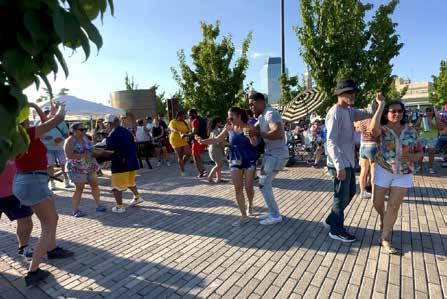
Salsa Sal Pá Fuera se organizó con el objetivo de resaltar la herencia cultural puertorriqueña a través de su rica y reconocida herencia musical. El pegajoso ritmo y sonido del género musical de la salsa es el protagonista principal de la programación musical.
Los organizadores han resaltado que este tipo de evento cultural tiene muchos beneficios más allá del entretenimiento musical. Por un lado, sirve como recordatorio nostálgico de sus raíces a una generación de puertorriqueños que por mucho tiempo han vivido fuera de la isla..
Ademáa, ayuda a construir una comunidad próspera e inclusiva donde el bienestar y la expresión cultural están entrelazadas. Al transformar el verano en una temporada de alegría, bienestar y apreciación cultural, deja un legado de unidad y vitalidad dentro de una comunidad multicultural. Al extender una invitación a otros miembros de la comunidad a descubrir la diversidad cultural de nuestra región, fomenta una comunidad inclusiva
María Pérez, Concejal del Barrio 1 de la ciudad de Springfield resaltó la importancia de este evento al expresar que “Salsa Sal Pá Fuera en el parque no es sólo entretenimiento; su misión es crear un espacio vibrante que celebre la herencia puertorriqueña y al mismo tiempo promueva la equidad y la inclusión”.
Publish your bilingual ad in El SolLatino! Call us today at (413) 320-3826.

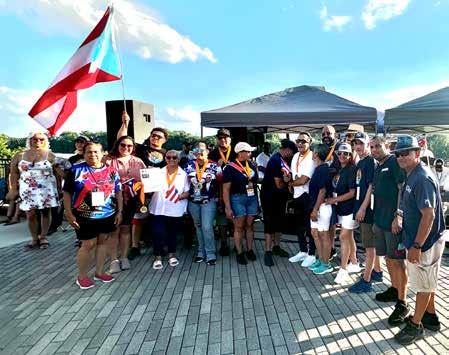
manifestó que “Tenemos la suerte de que se nos confíe la responsabilidad de construir una comunidad y estamos agradecidos con los voluntarios y partidarios de Salsa Sal Pá Fuera. Mi familia y yo seguimos comprometidos con el enriquecimiento de nuestra ciudad. Esperamos que puedas unirte a nosotros todos los domingos en Salsa Sal Pa’ Fuera en Riverfront”.
Waleska Lugo-DeJesús, líder comunitaria, resaltó el impacto económico que tiene la realización de este tipo de evento cultura.“ El estudio Arts & Economic Prosperity 6 (AEP6) confirmó que el sector cultural de Springfield generó $82,4 millones en actividad económica, apoyó 1,483 empleos, proporcionó $15,3 millones en ingresos fiscales e inspiró más gasto por visitante. Salsa Sal Pá Fuera está entusiasmada de continuar apoyando y aprovechando estos esfuerzos”.
En el evento, los organizadores reconocieron el apoyo y la ayuda de varios líderes y organizaciones comunitarias, tales como Domenic J. Sarno, Alcalde de Springdfield, el Departamento de Parques y Recreación de Springfield, la Concejal de la ciudad María Pérez, la organización comunitaria Mujeres a La Vanguardia, el Representante Estatal Carlos González, el Senador Estatal Adán Gómez, DJ Q., el Desfile Puertorriqueño de Springfield, Springfield Cultural Council, MGM Springfield, New North Citizens Council, e Inclusive Strategies. Tambien le dieron la bienvenida a los nuevos patrocinadores: Springfield Pharmacy, Doreen’s Going Places Travel Services, Carmen’s Gift shops, Union Capital, Holyoke Credit Union, y Stop & Shop.

STUDIES at HUNTER COLLEGE – CUNY | July 25, 2024 -The Center for Puerto Rican Studies (CENTRO) at Hunter College has announced that they have received $6,468,000 in funding from the Mellon Foundation. This grant is part of Mellon Foundation’s Presidential Initiatives, which supports a vast range of arts, culture, and educational projects, community groups, and organizations with special emphasis on multiple perspectives. Under the Presidential grant is the Puerto Rican initiative, which shows the Mellon Foundation’s commitment to highlight and preserve Puerto Rico’s artistic and cultural landscapes, both in the archipelago and in the Diaspora. These funds were awarded to CENTRO’s transformative 5-year research initiative “Rooted + Relational” led by CENTRO Directora, Dr. Yomaira Figueroa-Vásquez.
committed to bolstering the legacy and mission of CENTRO by seeing the value of what this initiative can do for this field and our community.”
“CENTRO is a singular institution that has championed a communityactivated vision of Puerto Rican scholarship and scholarly excellence for more than half a century,” said Elizabeth Alexander, President of the Mellon Foundation. “We at Mellon are pleased to support CENTRO as it embarks on this new research initiative, one that will spark further opportunities for learning and collaboration both within the CUNY system and with the broader public.”

Launching in the Fall of 2024, The “Rooted + Relational” research initiative will have an annual thematic structure, unifying the work across CENTRO, and offering scholarly and cultural programming. The inaugural theme for 2024-2025, “Archives, Memory & the Present Past of Puerto Rico,” reflects on the material and theoretical importance of the archive in contemporary scholarship and research practices, while opening a space to engage with archival contestation, historical reckoning, the state of our archival facilities, accessibility, and forms of archival refusal. Other upcoming themes include Boricuas in Relation (2025-2026); Black Cuerpas: Race, Body Politics & Culture (2026-2027); LGBTQ Activism, Pleasure & Worldmaking (2027-2028); and Land, Ecologies & Environmental Futures (2028-2029).
“The Rooted + Relational Initiative comes out of years of scholarly research, community building, and a pressing need to reframe critical discourses in the field of Puerto Rican Studies,” said CENTRO Directora, Dr. Yomaira Figueroa-Vásquez. “This generous funding provides an essential foundation to this work over the next five years. We are thrilled that Mellon President Elizabeth Alexander sees the importance of Puerto Rican Studies and that the Foundation has
“Hunter’s CENTRO is a unique institution that provides access to the rich cultural resources only colleges and universities can provide,” said Hunter College President Ann Kirschner. “With this generous grant, the Mellon Foundation ensures that the Puerto Rican community and all New Yorkers can experience and learn from the vibrant heritage of Puerto Rico and its diaspora.”
CENTRO - Founded in 1973 by a coalition of students, faculty, and activists, the Center for Puerto Rican Studies at Hunter College (CENTRO) is the largest and oldest university-based research institute, library, and archive dedicated to the Puerto Rican experience in the United States. It provides support to students, scholars, artists, and members of the community at large across and beyond New York. Additionally, it produces original research, films, books, and educational tools and is the home of Centro Journal—the premiere academic journal of Puerto Rican Studies. CENTRO’s aim is to create actionable and accessible scholarship to strengthen, broaden, and reimagine the field of Puerto Rican studies.
The Andrew W. Mellon Foundation is the nation’s largest supporter of the arts and humanities. Since 1969, the Foundation has been guided by its core belief that the humanities and arts are essential to human understanding. The Foundation believes that the arts and humanities are where we express our complex humanity and that everyone deserves the beauty, transcendence, and freedom that can be found there. Through our grants, we seek to build just communities enriched by meaning and empowered by critical thinking, where ideas and imagination can thrive. Learn more at mellon.org
in Massachusetts history, elected at age 25 as the first Hispanic in Springfield on the School Committee, serving until 1986.
Ruiz is also spearheading a new state-of-the-art sports complex in Holyoke, also set to become the new home for the International Volleyball Hall of Fame. This venture seeks to raise Holyoke’s status as the birthplace of volleyball and a hub for global sports development. Ruiz was the Community Leader Sponsor for the SSO’s firstever Latin-themed concert, Havana Nights, during the 2022-23 season. His partnership and connections within the community paved the way for the SSO to connect musically with the Latin community, attracting new audiences to Symphony Hall. Through his sponsorship, hundreds of middle and high school students from Springfield Public Schools and Holyoke Public Schools attended Havana Nights and several local Hispanic organizations were also represented in the audience.
Spirito recently retired from the Springfield Museums, where he had served as its Chief Financial Officer since 2014. During his time there, Spirito helped guide the organization from breakeven to eight years of profitability and successfully produced ten years of accurate budgets and yearend closings.
Spirito’s responsibilities in his role at the Springfield Museums included the annual budget and audits for all departments, maintaining banking relationships, and completing

LOS ANGELES, CA | UNIVERSITY OF CALIFORNIA Newsroom |
June 12, 2024 – Dr. Julio Frenk, the president of the University of Miami, will be UCLA’s next chancellor.

A native of Mexico, Frenk served from 2000 to 2006 as Mexico’s secretary of health. During this time, he worked to reform the nation’s health system and launched Seguro Popular, an ambitious program to provide universal, comprehensive health insurance. His efforts helped expand access to health care for more than 55 million uninsured people.
Previously, he was the founding director of Mexico’s National Institute of Public Health, one of the leading health education and research institutions in the developing world.
Outside of government, Frenk worked as an executive director at the World Health Organization in charge of developing the scientific foundation for health policies around the globe and was executive vice president at the nonprofit Mexican Health Foundation. In 2008, just before going to Harvard University, he was a senior fellow with the Bill and Melinda Gates Foundation’s global health program, where he counseled the organization on global health issues and strategies.
Frank, the first Latino to lead UCLA in its 105-year history, recognizes that inclusive excellence—the guiding principle behind UCLA’s newly launched five-year strategic plan—is the linchpin to the university’s success as a public institution in one of the nation’s most diverse cities.
At the University of Miami, Frenk has championed what he calls a
“culture of belonging” across the institution, where every individual — students, faculty and staff — is valued and has the opportunity to add value. Among his equity, diversity, and inclusion–related initiatives were the opening of the Center for Global Black Studies, the creation of a new Office for Faculty Inclusion and Diversity, and the strengthening of the Office of Multicultural Student Affairs.
Julio José Frenk was born in 1953 in Mexico City. In the 1930s, Frenk’s father, as a 6-year-old, left Germany for Mexico with his parents and sister to escape the growing climate of antisemitism. Frenk’s father, grandfather and great-grandfather were all physicians, as is one of his five sisters.
After receiving his medical degree from the National University of Mexico in 1979, he attended the University of Michigan, where he earned a master’s in public health in 1981, a master’s in sociology in 1982, and a joint doctorate in medical care organization and sociology in 1983.
Frenk co-chaired the influential Commission on the Education of Health Professionals for the 21st Century, launched by the medical journal the Lancet in 2010, which catalyzed major reforms in professional health education worldwide. He has authored 196 papers in academic journals, 182 articles in cultural magazines and newspapers, and 29 books, including two bestselling novels for children that explain the functions of the human body. He is fluent in English, Spanish and French.
Frenk is an elected member of the U.S. National Academy of Medicine, Mexico’s National Academy of Medicine, the American Academy of Arts and Sciences, and El Colegio Nacional, Mexico’s most prestigious honorary society for scientists, artists and intellectuals. He was honored with the Clinton Global Citizen Award in 2008 for serving humanity and transforming “the way practitioners and policymakers across the world think about health.”
Although much of Frenk’s time has been spent immersed in science, he said that music, art, and literature have always played a big role in his life. He ends each day by reading fiction, alternating between books in English and Spanish.
“To me, the connection between science and the arts is the world I grew up in,” he said. “My mother was a classical concert pianist. Two of my sisters are professional musicians. My brother is a cosmologist. My grandmother was a writer and translator whose last job was as the curator at the Museum of Modern Art in Mexico.”
Cesar Ruiz and Bernard Spirito Join the Board of Springfield Symphony Orchestra continued from page 4
operations reports, balance sheets, and cash flow analyses. Prior to the Museums, Spirito served as Vice President and Controller at Bassette Company, LLC for nearly 30 years. He has also worked at Smith & Wesson in various capacities, including Manager of Financial Analysis and Manager of Planning and Investment Analysis. Spirito has also been very involved with the Springfield Rotary Club since 1991, currently serving as Assistant Treasurer and is a past president of the organization. He is a Paul Harris Award recipient named Rotarian of the Year in 2012. Spirito has also served as past chairman of the Consolidated Finance Group of Springfield and past president of the Springfield Chapter of Financial Executives.
According to Paul Lambert, President and CEO of the SSO, “Cesar has had a remarkable business career and his deep commitment to community is making a mark in so many ways. His willingness to step forward in supporting the SSO’s Havana Nights program this past season helped bring new energy and a new audience to experience our Symphony. He is respected in the community, and we welcome him to our Board, where I know his voice will be heard as we build the SSO for the future.
Miguel Arce and José P. Arce
Since its birth in the Riverview Projects, in Springfield’s North End, Brightwood Health Center has partnered with community groups and organizations working to help improve the lives of the people they serve. The health center is the medical partner, providing extensive health care and services while supporting educational, economic, and spiritual growth that help make for improved outcomes.
The North End of Springfield, Massachusetts sprang from industrial development. Industry, which began booming at the turn of the 20th century, took advantage of the plentiful Irish, Polish, Russian, French, Greek and German immigrants who came here for a better life. Many settled in the North End and nearby areas. After World War II, wellpaying jobs rapidly expanded. The workers and their families were able to move to newer neighborhoods with rapidly growing housing available. In Puerto Rico, after World War II, small, subsistence farming was being quickly replaced by agribusiness. Rural land was also appropriated by the military in response to Cold War politics. People were forced into San Juan and other cities that were not prepared for the large influx of population.
Simultaneously, all along the Connecticut River Valley, tobacco planters needed workers. In the late 1940s through the 1950s, at the urging of the tobacco farmers, Puerto Rican seasonal farmworkers were recruited to the Valley to work at the farms. Some started to stay in Springfield and Hartford. They found work here as well as the necessary housing in the older neighborhoods that previous families had left for newer ones. In that way, the North End became the home of an increasing number of families from Puerto Rico, who came here for work and opportunity. In the 1960 census, the North End Puerto Rican residents were 20% of the population. In 1970 it was about 50%. People found work in many sectors of the economy; however, farm work still dominated. During those years throughout the growing season, it was not uncommon to see 15 buses, owned by tobacco companies, picking farm workers at the break of dawn in the North End to work in the tobacco fields.
The Springfield area economy began to break down in the 1970s as it did in countless other industrial cities in the Northeast and Midwest of the United States. Industrial owners, looking for increased profit, left the highly unionized areas for those countries with lower labor costs. Jobs became less available here in the United States. However, the social changes brought on by the War on Poverty, started in the 1960s, took hold. Although economic opportunities were less available, people in Puerto Rico, where the War on Poverty

was not implemented, were able to move to the mainland for different opportunities not available on their island. Health care and housing were obtainable in ways they were not in Puerto Rico. Springfield had both, so migration to the North End grew. In the 1980 census the “Hispanic” population of the North End reached 80%.
Citizen advisory boards, also known as citizen councils, are local government entities that involve community volunteers in political processes and policy-making. Their role was to establish participatory neighborhood bodies that would influence decision-making at a local level. The members of the citizens councils were, and are still voted for by members of the community in which they reside. In Springfield, the origins of community councils came from the 1966 Model Cities Program, part of the War on Poverty. Residents of the area voted in Community Councilmembers. In the North End, for several decades, up to 25% of the residents voted in the council election. This involvement activated people who were ready to become engaged. One such body was the New North Citizens’ Council (NNCC) which merged two community councils, The Brightwood Neighborhood and the Memorial Square Neighborhood Councils. Barbara Rivera and Carmen Rivera (not related) are examples of longtime community activists who served their neighborhood council for decades. Barbara Rivera, a pioneer community activist in the North End, understood that the North End had insufficient access to health care, but if united as a collective voice, the neighborhood could have a key role in improving the accessibility difficulties.
The first effort at bringing health care to the neighborhood came in the late 1960s when nursing professors from UMass Amherst asked the Neighborhood Councils if they could bring their students to the housing projects to help community residents learn ways to improve their health. Those were the early years of the development of Community Health Centers in the United States. Community meetings were held to discuss methods and they decided that they would organize community members to appeal to the then Springfield Hospital (now Baystate Health), located in the North End and the largest hospital in the city. The community held rallies and informational meetings. Soon the hospital agreed to start a clinic in an apartment in the Riverview Housing Project on Division Street. Nurses and community workers were hired, doctors volunteered to come once or twice a week, and the Brightwood Riverview Health Center (now Baystate Brightwood Health Center/Centro de Salud) was born.
Un podcast sobre la historia del archipiélago de Puerto Rico y el Caribe
Conversaciones con expertos sobre el tema y personalidades de interés.
Con el historiador público Ramón A. González-Arango López.
¡Nuevo episodio todos los jueves! ¡Comparte y disfrútalo!













SPRINGFIELD, MA | SPRINGFIELD TECHNICAL COMMUNITY COLLEGE |
June 27, 2024 – Springfield Technical Community College received a $250,000 state grant to work with other higher education institutions in Western Massachusetts to increase faculty’s core equity competencies and knowledge about racial equity, social justice and structures that have an impact on student success.
Announced by the Healey-Driscoll Administration on May 28, the Massachusetts Higher Education Innovation Fund grant from the Massachusetts Department of Higher Education will support professional development for faculty and staff at STCC and partner institutions. The goal of the project is to help underserved and underrepresented students –especially students of color – succeed along their academic journey, from applying to STCC to graduation.
“In Massachusetts, we’re proud to have significantly expanded access to higher education, including historic increases in financial aid, but work remains to ensure that students of all backgrounds have the resources and support they need to start and succeed in their higher education journey,” Gov. Maura Healey said in the May 28 announcement. “This investment reflects our commitment to enhancing educational opportunities and experiences for all students, particularly for our Black and Hispanic students.”
Initiating a second year of training, STCC will lead the project in partnership with Berkshire and Holyoke Community Colleges, Springfield College, and Westfield State University to raise the equity agenda across campuses throughout Western Massachusetts. Participants will receive a stipend for 15 to 20 hours of participation.
Faculty and staff from each institution will engage in comprehensive training programs designed to enhance their awareness of racial equity issues and their ability to integrate principles of social justice into their teaching practices.
Mary Wiseman, Director of Instructional Innovation and Faculty Investment, said the college started the project with a grant last year to advance the priorities of the state Department of Higher Education.
“We have a proven record at STCC. We have already trained many of our faculty and staff,” Wiseman said. “Working with our college and university partners, we strive to exchange ideas and learn with and from each other as we gain more knowledge, enhance our skills and advance the equity agenda across all our campuses.”
Wiseman said that the goal of the initiative is to make classrooms inclusive spaces where students feel welcomed and connected to the faculty and curriculum.
Faculty and staff at participating institutions will join a core coaching group known as Equity Leaders & Guides who will train in equity-minded practices.

Christopher Thuot, Vice President of Academic Affairs at STCC, said the important initiative is tied to the college’s mission to support students as they transform their lives. It also aligns with STCC’s Strategic Plan, “Momentum 2023-2028,” which centers the college’s commitment to equity and inclusion.
“This alliance represents a proactive response to the pressing need for educational institutions to address systemic inequalities and foster inclusive learning environments,” Thuot said. “By equipping faculty and staff across the consortium with the tools to navigate and dismantle barriers to student achievement, the initiative seeks to cultivate a more equitable educational ecosystem.”
The faculty will work together to discover new teaching techniques. They will attend workshop training with the Collaborative for Educational Services, CES Northampton
STCC, which has a technical focus in all of its programs, is designated as a Hispanic Serving Institution. Approximately 34 percent of the student body are Latino, Latina or Latinx.
STCC has supported several diversity, equity and inclusion efforts over recent years, including but not limited to the formation of the Anti-Racism and Inclusion Alliance and the creation of an equity agenda for each of the three academic schools.
The college offers an open-access Health Science degree which provides students, including those from underserved populations, with exposure to health care careers. STCC’s first year experience courses help prepare students to achieve success in a college setting. In addition, some of STCC’s degree programs such as photonics and dental hygiene are not offered anywhere else in the region.

| July 17, 2024 – Holyoke Community College (HCC) recently named William Reyes-Cubides as assistant vice president of academic affairs and student success.
In this new position, Reyes-Cubides will serve as a bridge between both sides of the Academic and Student Affairs division to ensure that students receive the support they need to achieve academic success.
“I am genuinely thrilled to join this vibrant community. The culture at Holyoke Community College is remarkable, and what I have observed so far is incredibly inspiring,” said Reyes- Cubides, who recently moved to South Hadley from San Jose, California, where he was dean of humanities, social science and arts at San Jose City College. “It is clear to me that everyone here is deeply committed to student success and passionately invested in their academic journeys.”
At San Jose, Reyes-Cubides’ experience included curriculum development, resource allocation, personnel supervision, community relations and outreach, and student success initiatives. He previously worked as the dean of arts and humanities at Southcentral Kentucky Community and Technical School and an academic specialist of curriculum development and coordinator of language instruction at Michigan State University.
At HCC, he will oversee HCC student support programs, including El Centro (for Latinx students), ALANA (for men of color), TRIO (for first-generation, low-income students), the Office for Students with Disabilities and Deaf Services, the Center for Academic Program Supports (tutoring centers), academic English as a Second Language, and SAMP, HCC’s Student Ambassador Mentorship Program.
He started Monday, July 8.
“The core mission of this position is to ensure student retention, persistence from one semester to the next, and ultimately, graduation,” he said. “My priority is to foster positive and meaningful student learning experiences. By acknowledging and valuing the cultural wealth and backgrounds that our students bring into the classroom, we create the perfect environment for academic success. Additionally, cultivating a strong sense of belonging for our students is essential to their overall well-being and success.”
The son of a teacher, Reyes-Cubides was born and raised in Colombia. He holds a bachelor’s degree in education, Spanish and English studies from the Universidad Pedagógica Nacional de Colombia in Bogotá, and a master’s degree in Romance languages and Hispanic studies from Boston College. He is pursuing his doctorate in education in leadership for equity in higher education from the University of Colorado-Denver.
Tercer cuento de la serie Con la música a otra parte por JOSÉ EDGARDO CRUZ FIGUEROA
La familia de Elena Rodríguez, la “Reina del Arrabal” que había inspirado la canción “Cortaron a Elena”, no era única. En el Fanguito vivían cientos de familias y cientos de miles de personas. Como Adán en la fábula cristiana, las casas habían surgido del barro. Rellenando el fanguero a los márgenes de lo que vino a ser la calle Sagrado Corazón, más abajo de la vía del tren, migrantes del sur de Puerto Rico habían construído una comunidad.
Cuando no hubo más espacio en el fango, levantaron casas en el agua. El Caño Martín Peña se tornó una versión arrabalera de Venecia, pero con estructuras sencillas de madera y techos de zinc a dos aguas. Góndolas no habían. Para ir de casa en casa o para llegar a tierra, había que caminar por “puentes improvisados”, hechos con tablones de madera de dos por veinticuatro pulgadas, en los cuales, para ir a la segura, había que caminar con un pie enfrente del otro. Las mujeres que no tenían otro sitio a donde ir podían verse en los tablones contemplando el aire, quizás con un niño o niña en los brazos.
De vez en cuando, un niño inocente y curioso, al verse reflejado en el caño, se tiraba al agua para jugar con su homólogo y si no había nadie supervisándolo perecía ahogado. Eso le sirvió de inspiración a José Luis González para escribir “En el fondo del caño hay un negrito”. En esa historia, casas nuevas aparecían en el agua de la noche a la mañana, como quien dice, los constructores aprovechando la oscuridad para no ser cogidos en pifia por las autoridades. Era improbable que las autoridades estuviesen pendientes del crecimiento del arrabal, pero ese dejo de clandestinidad en la trama hacía que la historia fuese más interesante.
La abuela de Arturo Martínez era una de esos migrantes. Se mudó del pueblo de Arroyo, en el sur de Puerto Rico, al Fanguito por ahí por el 1948, y se instaló en una casa levantada en zocos con tres cuartos, un garaje para el carro de su marido, que era chofer de carro público, y una letrina en la parte de atrás, al lado de un corral de puercos. Se entraba por el lado norte, por unas escaleras de cemento, y también por la parte de atrás, pasando por un pasillo bastante ancho, separado de la casa vecina por una verja de madera de cuatro pies. La parte de atrás era como una terraza y de ahí se bajaba al patio trasero para usar la letrina o para alimentar las gallinas y los puercos. La dirección era Sagrado Corazón, número 50. La casa no estaba en el agua.
En ese mismo año, el dirigente comunista William Z. Foster, escribió una carta abierta a Harry Truman que fue publicada en forma de panfleto titulado The Crime of El Fanguito. Foster caracterizó al arrabal como “cáncer social”. Era, dijo él, un lugar de “vitalidad maligna” que en un período de quince años había esparcido “su veneno mortífero por todas partes”. Durante ese período, de pocos cientos de casuchas estrafalarias había llegado a contener miles de hogares albergando a casi 100,000 habitantes. Según Foster, allí vivían familias infelices, oprimidas, miserables, hambrientas y malnutridas. La mayoría de las casuchas, dijo él, no eran aptas para albergar a cerdos y por ende mucho menos a seres humanos. Se trataba de una “comunidad Americana siniestra”, infestada de
tuberculosis, lombrices, malaria y bilarcia, que podía ser una versión moderna del Infierno de Dante.
Según Foster, El Fanguito era un producto del colonialismo. Era una consecuencia directa de la expropiación capitalista de los campesinos Boricuas por las compañías azucareras norteamericanas y de su campaña en contra de la industrialización del país. Ello había creado una tasa de desempleo de entre 40 a 75 porciento cuyo resultado fue la migración interna y el crecimiento de arrabales. El Fanguito era el más notable en el área metropolitana.
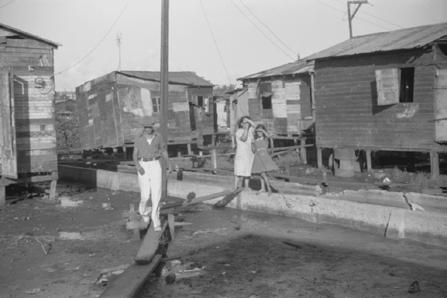
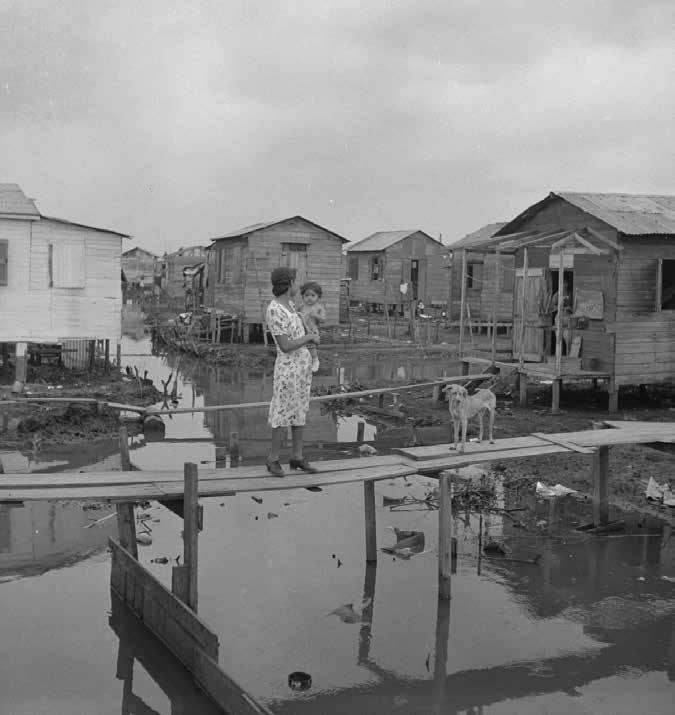
continued on next page
El Fanguito, dijo Foster, era un basurero humano, una metáfora viva del imperialismo de Wall Street y un modelo de lo que los imperialistas del norte se proponían propagar por el resto del mundo. “Dejemos que El Fanguito”, dijo en su escrito, “con su opresión y su miseria, sea una señal de alerta para los pueblos de América Latina que anuncia lo que el imperialismo de Wall Street tiene en mente para ellos”. Según él, “lo único que el moribundo sistema capitalista mundial tiene para ofrecerle a la humanidad en escala creciente es El Fanguito. Pero las masas del mundo nunca aceptarán al Fanguito porque es un símbolo de miseria y opresión.”
Foster también dijo que El Fanguito era un ejemplo de “la tendencia inconquistable de la gente de sacarle provecho a su situación por peor que sea, compartiendo sus escasos recursos con otros más desventajados, luchando por asearse en medio de condiciones de suciedad extrema, acicalando sus casuchas con flores y pintura y tratando de manera heroica de instalar un sistema de luz eléctrica y de establecer un plano de calles con sus pobres recursos”.
Así, hablando con cientos de personas en su recorrido por el vecindario, descubrió con asombro que de todas las cosas que los residentes querían no había otra más importante que “el derecho a vivir en ese terrible arrabal”. Foster se sintió enfermo y no supo qué decir al escuchar que el reclamo más grande de los vecinos con quienes habló era que les permitieran vivir en el hoyo infernal que era El Fanguito. Pero el reclamo tenía su lógica pues, después de todo, en ese arrabal los vecinos tenían casa y comida, la oportunidad de ganarse cincuenta centavos al día chiripiando en San Juan, el apoyo de sus familias y la solidaridad de la comunidad.
Con la excepción del deseo de los residentes del Fanguito de que no los sacaran del vecindario, de los sentimientos de pertenencia, de afán colectivo y solidaridad mencionados en el panfleto de Foster, nada de lo que él dijo compaginaba a cabalidad con la realidad vivida por la gente del arrabal. Su argumento se elevó progresivamente, alcanzando en cada nueva aseveración alturas de abstracción cada vez más encumbradas. Como un Ícaro teórico, se acercó tanto a su sol ideológico que se le derritieron las alas conceptuales. Con la idea de que Truman tenía la intención de iniciar una Tercera Guerra Mundial que llevaría al derrumbe del capitalismo y al inicio del socialismo, su elaboración terminó estrellándose.
Una imagen de un niño bien vestido, con camisa y corbata, sonriente, con sus libros debajo del brazo, listo para ir a la escuela, posando frente a las escaleras de una casa que era muy parecida a la casa de la abuela de Arturo Martínez, si no desmentía por completo el perfil elaborado por Foster, al menos ofrecía una realidad alterna, complementaria.
El niño estaba bien peinado y se veía saludable. Estaba parado sobre tierra firme. El portón de entrada al pasillo lateral de su casa estaba hecho de maderas encontradas, pero las escaleras que llevaban al balcón eran de cemento, como lo era también el balcón de la casa de al lado. Eso presuponía dinero, y por ende empleo. Obviamente alguien en su familia tenía una cámara, lo cual no era común en la época del Fanguito. Había tenido los recursos necesarios para comprar un rollo de película y dinero para pagar por revelarlo. Eso no costaba tanto como comprar cemento, arena y varillas para construir la escalera y el balcón. Claramente, la familia podía asumir ese costo
mayor. Sin duda, en la casa había un albañil y si no, habían contratado a alguien para hacer el trabajo.
Asimismo, la foto del primer cumpleaños de Arturo, sentado en la mesa del comedor de la casa de su abuela, con un chiforobe a su espalda repleto de cristalería fina, desmentía la imagen de miseria generalizada presentada por Foster. La foto de sus tías con su pelo recogidito con lazos blancos, vestidas de blanco, con medias blancas, Palmira y Rosa Julia con zapatos negros de charol y Elsie con sandalias negras de plástico, también ponía en entredicho el perfil de enfermedad, pobreza, e infelicidad elaborado por Foster en su carta.
Esas fotos no eran parte del record público. Si Foster vio imágenes similares durante su recorrido, las ignoró para poder pintar un cuadro coherente con su visión ideológica.
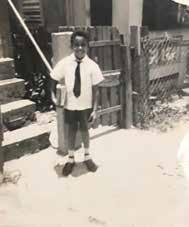
Obviamente alguien en su familia tenía una cámara, lo cual no era común en la época del Fanguito.
Para ser justo, hay que admitir que su perfil podía ser fiel a la realidad de 1948, mientras que las fotos del niño sonriente, de las tías de Arturo, y de su cumpleaños reflejaban la realidad años más tarde.

La foto del primer cumpleaños de Arturo, sentado en la mesa del comedor de la casa, con un chiforobe a su espalda repleto de cristalería fina, ofrecía una realidad alterna, complementaria.

Las imágenes bonitas y alegres eran las que Arturo recordaba. Para él, durante su niñez, la miseria del arrabal fue una idea inexistente y luego, al cobrar conciencia cabal de cómo había sido el entorno más allá de su realidad inmediata, la pobreza fue una abstracción concretizada por la teoría más que por la experiencia. En El Fanguito, siempre se sintió protegido, nunca sufrió de enfermades serias, nunca pasó hambre, y cuando jugaba con sus primas debajo de la casa o cuando se trepaba en el techo a volar chiringas, era feliz.
La foto de sus tías también ponía en entredicho el perfil de enfermedad, pobreza e infelicidad elaborado por Foster en su carta.
continued on next page
continued from page 10
La casa de la abuela de Arturo nunca tuvo un fregadero como Dios manda. Pero la letrina fue reemplazada por un baño, con lavamanos, inodoro y ducha. Sus tías tocaban música en un tocadiscos y en la televisión Arturo veía El Show del Mediodía durante los días feriados y el verano. Durante las tardes y la noche veía a Supermán, Roy Rogers, Hopalong Cassidy, El llanero solitario, Perry Mason, Patrulla de caminos, y 77 Sunset Strip. En la terraza de atrás, después de graduarse de la Vocacional, su tía Palmira instaló una especie de beauty, donde recortaba pelo, le hacía tisin a sus hermanas, y le daba papasos a Arturo y a sus hermanos.
El agua caliente vino más tarde, cuando su abuela se mudó, primero para la calle 13 y luego la calle 11 de Barrio Obrero. La casa de la calle 13 fue costeada con la indemnización del gobierno provista a los expropiados del Fanguito a principios de los años 70 y la de la calle 11 la compró Elsie con el dinero de la venta de la casa de la calle 13 y con un préstamo hipotecario que cubrió la diferencia entre el dinero obtenido con la venta y el precio de la nueva casa. Elsie se fue a vivir a Estados Unidos y le dejó la casa a su madre. Ahí vivió la abuela de Arturo hasta que le dio un derrame y se fue a vivir con Palmira quien la cuidó hasta el final. Que Arturo supiera, su familia nunca se preocupó de que la forzaran a salir del Fanguito. Ellos nunca sintieron el pánico que la palabra deshaucio solía provocar en los que la escuchaban como una amenaza. Arturo nunca la oyó en boca de nadie y cuando sus familiares hablaban del tránsito de El Fanguito a Barrio Obrero siempre decían que se habían mudado, como si hubiese sido un traslado hecho por decisión propia.
La destrucción del Fanguito prometía ser un buen paso hacia la solución del problema de los arrabales. Pero no fue así pues la necesidad de tener un hogar propio seguía siendo apremiante para mucha gente que no tenía los recursos necesarios para costearlo, tal y como había sido el caso con los migrantes que poblaron El Fanguito durante los años 30.
Lo que Foster no mencionó en su carta a Truman fue que entre el 1940 y el 1948, los reformistas tecnocráticos del Partido Popular Democrático, bajo el liderato de Luis Muñoz Marín, habían gestionado una serie de iniciativas dirigidas a bregar con el problema de la pobreza, especialmente la pobreza creada por la mecanización de la agricultura de la cual El Fanguito era un resultado. Como ha dicho Liliana Cotto en su ensayo “The Rescate Movement: An Alternative Way of Doing Politics,” publicado en Colonial Dilemma, un libro editado por Edwin Meléndez y Edgardo Meléndez, además de El Fanguito, la migración interna de campesinos expropiados y de trabajadores desempleados generó las comunidades de Tokío, Trastalleres, y Buenos Aires.
Según Cotto, esos arrabales llegaron a su desarrollo máximo en 1950. Ahí se produjo un impasse entre residentes y el estado: los residentes no podían hacer mejoras ni nuevas construcciones y el estado tampoco atendía sus necesidades. En ese contexto, el crecimiento de los arrabales se tornó no solo clandestino sino también ilegal. Entonces surgieron las diferentes “Villas,” comunidades de gente desposeída que fueron tildadas como invasores o rescatadores de terrenos, dependiendo de quién hablara. Un problema en el seno de este movimiento era la presencia de oportunistas que “rescataban” terrenos sin necesitarlos para acumular bienes raíces “de gratis”. Esa era una tara con la que los
participantes honestos tenían que bregar.
Una diferencia importante entre pobladores del Fanguito como la abuela de Arturo y los que surgieron más adelante, fue que los últimos se asentaron en la periferia urbana. Ellos no tenían que bregar con el agua. No necesitaban los “puentes improvisados” que usaban los que vivían en el caño. Además, se asentaban en terrenos baldíos de mayor valor que un fanguero. En su trama habían intereses económicos, empresarios, agentes de bienes raíces, o compañías con intenciones concretas, que no jugaron un papel importante en el desarrollo de los primeros arrabales. Por eso, en contraste con la experiencia de la familia de Arturo, se exponían a ser confrontados por el gobierno y eventualmente al deshaucio. Lo que nadie anticipaba era que la confrontación se tornara violenta, lo cual fue el caso.
A partir del 1973, el plan del gobierno era legalizar las comunidades creadas por el rescate de terrenos antes de enero de ese año. A la par con la legalización de comunidades existentes se promulgó la orden de impedir la incidencia de nuevas invasiones, que era como las definía el gobierno, o nuevos rescates, que era como definían su acción los ocupantes. En la segunda pata de esa dupleta, la violencia acechaba. Al sentirse amenazados, los rescatadores adoptaron una posición que presagiaba esa violencia: “Para quitarnos la tierra, tienen que quitarnos la vida”. Así sucedió precisamente y en 1980 Adolfina Villanueva Osorio se convirtió en símbolo de resistencia contra las fuerzas del estado y ejemplo desgraciado de las consecuencias del desafío a su autoridad.
En el 1977, el gobierno respondió a los reclamos de 17,000 familias con la concesión de títulos de propiedad sobre los terrenos que habían rescatado entre 1973 y mediados de 1975. La estrategia del estado combinó medidas de ayuda social y préstamos con vigilancia policíaca, cargos criminales y violencia. Amparada en la parte positiva de la estrategia del estado, Adolfina hizo su reclamo. El suyo fue hecho no solo al gobierno sino también a la iglesia católica que era la dueña del solar donde había construido su modesta casa. La iglesia decidió rechazar su petición, anulando su derecho. El gobierno adoptó una postura radical y decidió destruir su hogar y acribillarla a balazos.

¿Era “Deshaucio” sobre la Adolfina de Puerto Rico o una invención para denunciar un problema Latinoamericano y del Caribe?
continued on next page
Con la Música a Otra Parte: Deshaucio
continued from page 11
¿Cuándo escribió Tite Curet “Deshaucio”, la canción basada en la historia de Adolfina? ¿Por qué fue grabada en el 1994 y no antes? Quien no hubiese prestado atención en 1980, cuando Alfonsina fue acribillada, jamás sabría que la canción en el disco de Willie Colón y Rubén Blades Tras la tormenta se refería a la Adolfina puertorriqueña, negra de Loíza, en vez de a una Adolfina genérica de América Latina y el Caribe, inventada para denunciar el problema compuesto de la falta de vivienda y la violencia racial. ¿Estaba el público consciente de esos problemas en el 1994, a tanta distancia del llamado “crimen de El Fanguito” de los años 40 y del homicidio de Villanueva Osorio en el 1980? ¿Quién se acordaba de las famosas Villas Pangola, de la Villa Clemente y las Villas Hostos y Dávila que por allá por el 1973 habían formado la Federación de Rescatadores de Tierras? ¿Cuál era, si alguna, la relación en 1994 entre la movilización social y la respuesta del estado en cuestiones de vivienda? ¿Quién se preocupaba por la cuestión racial en Puerto Rico? ¿Seguían vivos esos asuntos o había un desfase entre el llamado de protesta de la canción de Tite Curet y la realidad del momento?
Si esto fuese un trabajo académico, esas preguntas serían contestadas. Pero esto, aunque no lo parezca, es un cuento, no un ensayo. Ahora te puedes reir. Como diría mi mamá, puedes decir, ¿No me digas? ¿Cómo que esto no es un ensayo? Pues si lo fuera, digo yo, tendría notas al calce. Pero qué ridículo, dices tú, si hoy día hasta los cuentos tienen notas al calce. Eso es cierto, añado, pero eso no los convierte en ensayos. Pero mira, sigo, este “diálogo” contigo es prueba de que lo que aquí digo es un cuento, pero solo en el sentido de “contar” en vez de “inventar”. Por favor, dices tú. “La soga sigue partiendo por lo más fino”, afirma la canción de Tite Curet. Y eso no es cuento.

Inicialmente Arturo Martínez no supo si estaba en el presente o el pasado. ¿Se repetía la historia? ¿A qué nivel? Los personajes, ¿eran el mismo personaje con nombres distintos? Si el presente era una repetición del pasado, ¿podía cambiarse el resultado? Después de un largo tiempo de reposo, ya liberado del recuerdo de la que pensó era el amor de su vida, se encontró en una aventura que le hizo dudar si en verdad era un hombre nuevo, feliz y sin remordimientos, emancipado del peso enorme que por mucho tiempo le había hecho sentirse aplastado.
JOSÉ EDGARDO CRUZ FIGUEROA (cruzjose5319@gmail.com) es natural de San Juan y criado en El Fanguito y Barrio Obrero en Santurce, Puerto Rico. Es profesor emérito de ciencias políticas en la Universidad del Estado de Nueva York en Albany.
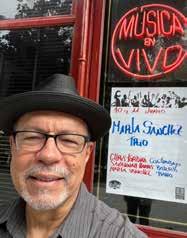
OneHolyoke CDC está ofreciendo a la venta tres casas dúplex para personas con ingresos restringidos, precio de venta de $225,000 cada una:
278 Pine Street
291 Walnut Street
299 Walnut Street
Las casas tienen aproximadamente 2,800 pies cuadrados; 2 a 3 dormitorios y porche (porches) en cada departamento
Los solicitantes seleccionados deben estar calificados en términos de ingresos (que no excedan el 80% del ingreso medio del área (AMI). Una vez calificados, los solicitantes participarán en una lotería con licitadores seleccionados al azar por OneHolyoke. Los solicitantes seleccionados deben aceptar los términos de ocupación. Además de ser propietarios calificados en cuanto a ingresos. Deben ocupar la vivienda durante 10 años.
Para obtener más información o aplicar, visite:




by MIKE MADRID SIMON & SCHUSTER |
June 18, 2024 | 272 pages

An insightful investigation of how and why the two major political parties have failed to appeal to the Latino vote—the largest ethnic voting group in the country—and the impact it will have on American democracy and politics for decades to come.
In 2020, Latinos became the secondlargest ethnic voting group in the country. They make up the largest plurality of residents in the most populous states in the union, as well as the fastest segment of the most important swing states in the US Electoral College. Fitting neither the stereotype of the aggrieved minority voter nor the traditional assimilating immigrant group, Latinos are challenging both political parties’ notions of race, religious beliefs, economic success, and the American dream. Given their exploding numbers—and their growing ability to determine the fate of local, state, and national elections— you’d think the two major political parties would understand Latino voters. After all, their emergence on the national scene is not a new phenomenon. But they still don’t.

Republicans, not because of their best efforts but rather despite them, are just beginning to see a movement of Latinos toward the GOP. Democrats, for the moment, still win a commanding share of the Latino vote, but that share is dwindling fast. Now, in The Latino Century, veteran political consultant Mike Madrid uses thirty years of research and campaign experience at some of the highest levels on both sides of the aisle to address what might be the most critical questions of our time: Will the rise of Latino voters continue to foment the hyper-partisan and explosive tribalism of our age or will they usher in a new pluralism that advances the arc of social progress? How and why are both political parties so uniquely unprepared for the coming wave of Latino votes? And what must each party do to win those votes?
By answering these questions, The Latino Century explores the true meaning of America at a time of rapid cultural change, the founding principles of self-government and individual responsibility, and one man’s journey through a political party that has turned itself inside out.
About the author
MIKE MADRID is a veteran American political consultant, one of the country’s authoritative experts on Latino voters, and a co-founder of The Lincoln Project. A graduate of Georgetown University, he served as the press secretary for the California Assembly Republican leader, as the political director for the California Republican Party, and as senior adviser to both Democrats and Republicans. He is a partner in GrassrootsLab, a political consulting firm in California.

por VANESSA DROZ EDITORIAL de la UNIVERSIDAD DE PUERTO RICO | Junio 6, 2024
Animal mirado-Antología retrospectiva 2022-1982, una selección de la obra poética de la escritora Vanessa Droz, ha sido publicada por la Editorial de la Universidad de Puerto Rico, Recinto de Río Piedras (EDUPR-RP), y fué presentada el 13 de junio de 2024 en el Museo de Las Américas, localizado en el Cuartel de Ballajá en el Viejo San Juan. La presentación estará a cargo del poeta José Luis Vega. “Vanessa Droz es una de las poetas más importantes de nuestro país, que cuenta con una importante trayectoria literaria de alcance y reconocimiento internacional. Era tiempo de que se recogiera en un solo libro una selección de su poesía”, señaló Edder González Palacios, director de la EDUPR-RP y también poeta. “Se trata de un proyecto que se comenzó a trabajar en 2019, pero que finalmente ve la luz este año y que concebimos como un paso importante de entrada a una nueva etapa en el calendario de publicaciones de la Editorial, que incluye —entre otras gestiones— apostar por la tradición de publicar antologías de reconocidos poetas puertorriqueños”, agregó.
El director de la EDUPR-RP explicó que la selección de los poemas ha sido de la propia autora e incluye textos de sus seis libros previos —La cicatriz a medias (1982), Vicios de ángeles y otras pasiones privadas (1996), Estrategias de la catedral (2009), Las cuatro estaciones (2016), Bambú y otros horizontes (2016) y Permanencia en puerto (2019)—. “Una primera parte de Animal mirado, que la poeta ha titulado Siempre de viaje, ella dormida, la componen textos inéditos o incluidos en revistas y antologías, principalmente de fuera de Puerto Rico”, dijo.
Animal mirado cuenta, además, con dos prólogos, ambos de dos reconocidas poetas puertorriqueñas: Jannette Becerra y Rosa Vanessa Otero. Sobre la autora de Animal mirado, Becerra indica que: “Vanessa Droz es, sin duda alguna, una de las voces más intensas, inteligentes y poderosas de la lírica puertorriqueña de la contemporaneidad. (…) Poesía densa, tensa, intensa, la de Droz no es obra que se entregue dócilmente al lector… La poeta y el lector son, simultáneamente, el animal que mira y es mirado. Y es que, como bien supo explicar Pedro Salinas en La realidad y el poeta, todo poeta difícil, si es poeta verdadero, nos entrega en su propia obra la clave para descifrarla…¨.
por ESTHER RODRÍGUEZ-MIRANDA

Por su parte, Otero, editora de la EDUPRRP, describe esta colección que se presenta como ¨… la primera edición selecta de la poesía escrita hasta el presente por Vanessa Droz, escritora puertorriqueña de la generación del setenta… La palabra retrospectiva es una intervención nuestra que quiere remitir al afán de esta poeta por la mirada y asociar ya, desde aquí, su poética o sus poéticas con una de sus más fervientes admiraciones; el arte visual, sea plástico o fotográfico. (…) Queda siempre, por supuesto, la opción de hacer una lectura cronológica ascendente o, incluso, en orden aleatorio o en desorden: nada menoscabará la experiencia de estar ante una obra pulida y asombrosa”.
Para la doctora Angélica Varela Llavona, rectora del Recinto de Río Piedras de la UPR, la publicación de esta obra significa un gran logro, tanto para la Editorial como para la comunidad universitaria, ya que es la primera obra publicada desde que la Editorial se adscribió al Recinto de Río Piedras en febrero de 2023. “La Editorial de la UPR es una institución de amplio prestigio que desde 1943 se ha destacado por ser el medio de difusión ideal para el desarrollo cultural e intelectual producido en las aulas de nuestra universidad y por dar a conocer obras de interés cultural universal. Al aceptar la enorme responsabilidad de acoger su operación desde nuestro recinto lo hicimos con plena conciencia del rol que asumíamos de cara a la conservación de la historia del acervo literario insular. Hoy nos sentimos orgullosos de que la primera publicación de esta nueva era de la Editorial sea esta maravillosa antología de la ilustre autora puertorriqueña Vanessa Droz”, expresó la rectora Varela Llavona. “Felicito al director de la Editorial, Edder González Palacios, a su editora Rosa Vanessa Otero y a todos los integrantes de su Consejo Editorial por su compromiso y entrega. Con su trabajo evidencian que nuestro recinto está a la altura de los principales centros educativos del mundo al contar con una Editorial activa y vibrante, al servicio de la comunidad universitaria y del país”, añadió Varela Llavona.
Editorial EDP University | Febrero 23, 2024 | 82 páginas
Esther I. Rodríguez-Miranda es una rescatadora con la palabra. Desde sus propuestas de pensamiento realiza un rescate ensayístico, cual acto de reivindicación y preservación de aquellas acciones ancestrales protagonizadas por mujeres negras. Con su pluma rescata estas narrativas que han caído en el olvido o han sido subestimadas a lo largo del tiempo. Estos ensayos son un gran esfuerzo dedicado a recuperar y dar nueva vida a estas historicidades que merecen ser redescubiertas por las generaciones actuales y futuras. Ello implica no solo la mera recopilación de testimonios olvidados, sino también una cuidadosa restauración de su valor y relevancia en el contexto actual.
En última instancia, este rescate ancestral es una empresa noble que enriquece el patrimonio cultural y literario de la puertorriqueñidad y de la humanidad entera, al dar voz a aquellas agencias que han sido marginados o pasadas por alto injustamente. Rodríguez-Miranda nos hace un recordatorio de que la historiografía es a su vez, un tesoro inagotable de conocimiento y emoción, y que todas las voces merecen ser escuchadas y apreciadas a lo largo del tiempo.

Astros
Van Sickle Softball Field, Springfield, MA • Julio 27, 2024








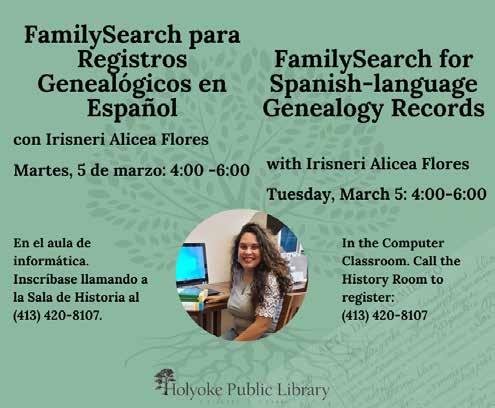






Scan QR code for more information
Presented by the Mi Museo Committee of the Springfield Museums
Supported by the Massachusetts Office of Travel and Tourism
